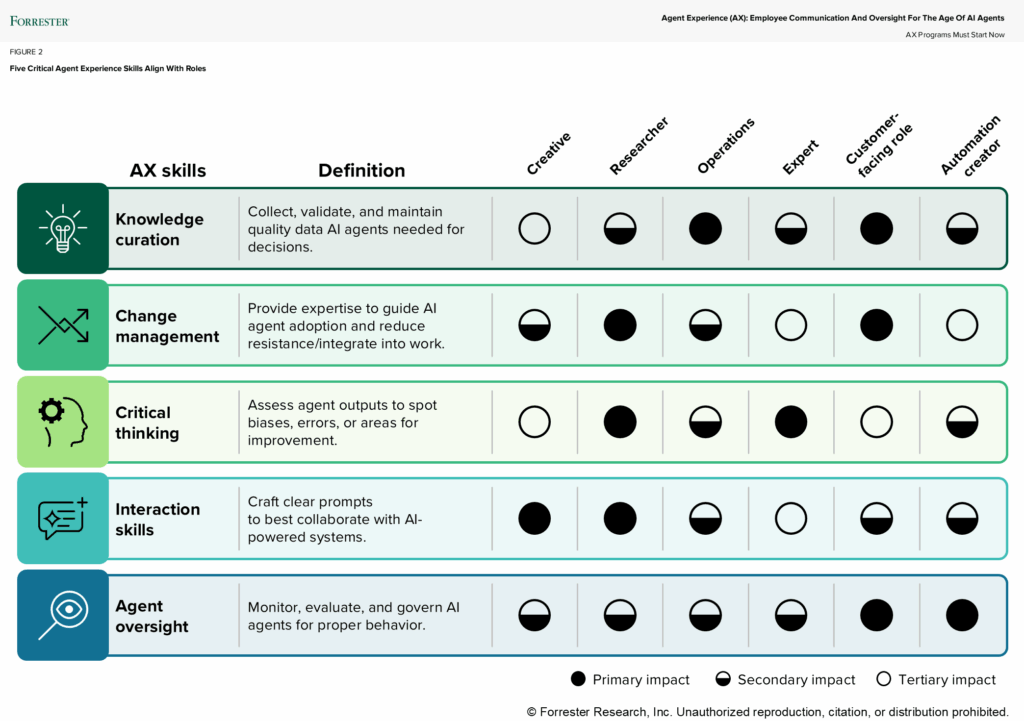Prepare Your Workforce For An Agentic Future With An Agent Experience Program
The conversation around AI agents usually starts with the word “efficiency.” Companies talk about how agents will slash costs, automate rote tasks, and free up teams to focus on “higher value” work. But the untold story is organizational shock and disruption.
The Human Headache
This transition to a hybrid agent/human workforce is expensive and not well understood. If you think the biggest hurdle in deploying AI agents is in building them, making API calls, or weathering cloud consumption costs, think again. Service companies tell us that for every dollar spent on AI agent licensing, organizations are spending nearly five dollars on services to get them running at scale.
Where does most of that money go? Human and organizational change. It goes toward consultants, workshops, change management meetings, and existential coffee breaks required to answer the most important question: What exactly does my job look like now that Agent Smith can do it better, faster, and without needing a vacation?
Five Skills Must Define Your AX Program
To succeed, organizations must invest in AX (agent experience): the discipline to prepare an organization to successfully integrate agents as collaborative partners with the human workforce. In order to address this, you must consider five specific, critical AX skills: knowledge curation, change management, critical thinking, interaction skills, and agent oversight.

While mastering each skill is a demanding undertaking (virtually a program in itself), enterprises can avoid being overwhelmed by discarding a “one size fits all” approach. Instead, we propose organizing enablement efforts around generic roles. This allows you to identify the single most impactful AX skill per role and focus it directly on the individuals that stand to benefit the most.
Let’s try a few examples. An aircraft mechanic requires a high degree of specialized knowledge, precision, and — most of all — accuracy to diagnose an issue. An AI agent can comb through thousands of pages of specifications for them, but this mechanic’s “expert” role must apply critical thinking to vet the results. By contrast, a “creative” role, such as a graphic designer or marketing campaign architect, must enhance their agent interaction and prompting skills to get the broadest range of ideas from AI.
This approach of targeted strategies per role ensures maximum organizational impact without paralyzing the entire workforce.
Build A Human-Centric AX Program
The way forward is to redesign systems not around humans (as we have done up until this point) but around new digital minds. Just as modern warehouses are designed around physical robotics, we must now design new operating models around cognitive automation. Technology is evolving nicely, but approaches to deal with the messy, awkward, and surprisingly expensive task of reeducating and organizing humans have not.
Clients can access our new research, which explores how to prepare your workforce for AI agents, what AX skills matter most, and how to communicate change effectively. If you have questions, please schedule a guidance session or inquiry with myself or David Brodeur-Johnson. We have plans to continue this research, so stay tuned for more on what a great AX program looks like.
